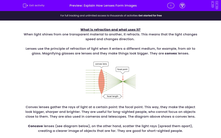What is refraction and what uses it?
When light shines from one transparent material to another, it refracts. This means that the light changes speed and changes direction.
Lenses use the principle of refraction of light when it enters a different medium, for example, from air to glass. Magnifying glasses are lenses and they make things look bigger. They are convex lenses.
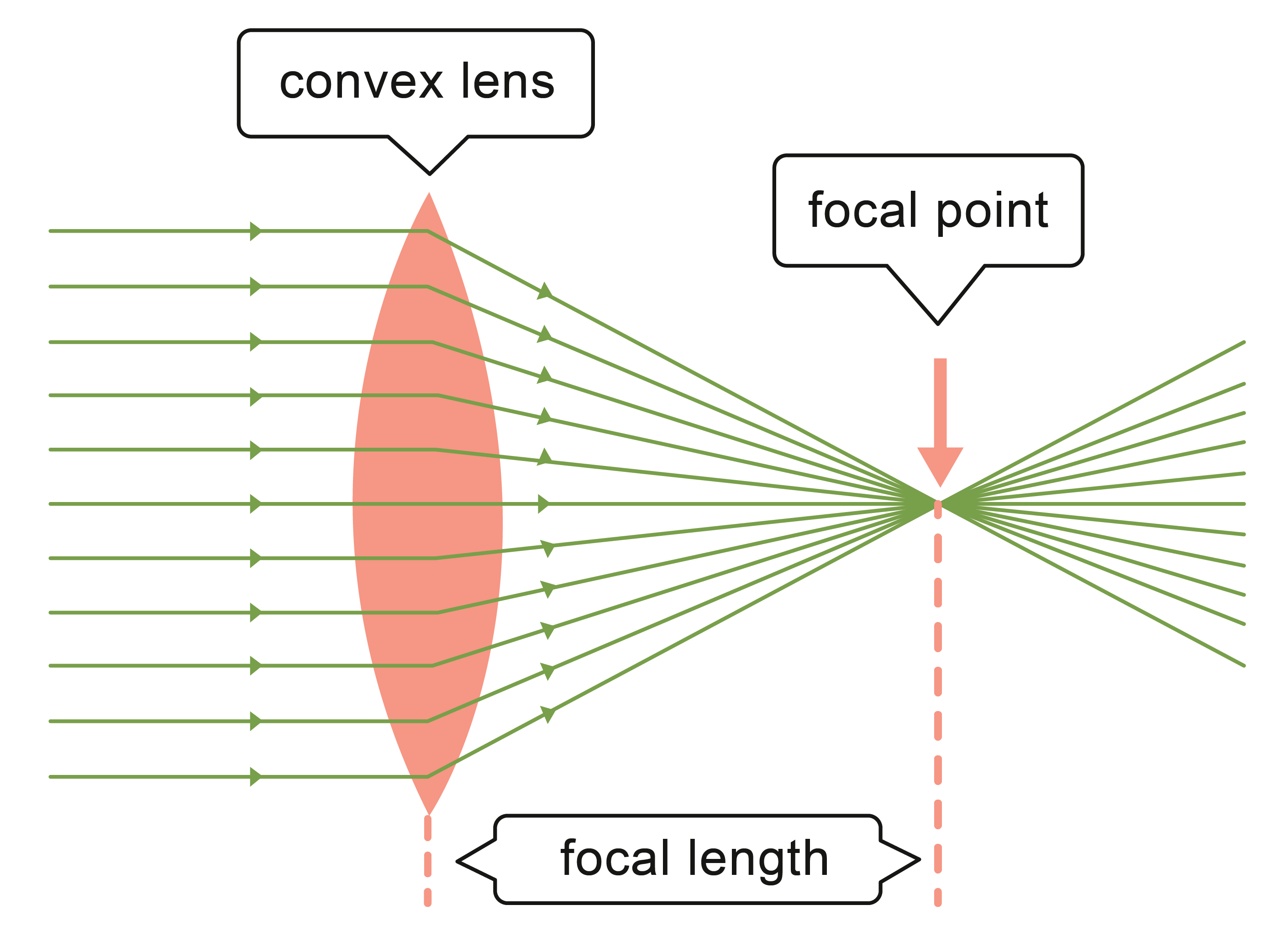
Convex lenses gather the rays of light at a certain point: the focal point. This way, they make the object look bigger, sharper and brighter. They are useful for long-sighted people, who cannot focus on objects close to them. They are also used in cameras and telescopes. The diagram above shows a convex lens.
Concave lenses (see diagram below), on the other hand, scatter the light rays (spread them apart), creating a clearer image of objects that are far. They are good for short-sighted people.
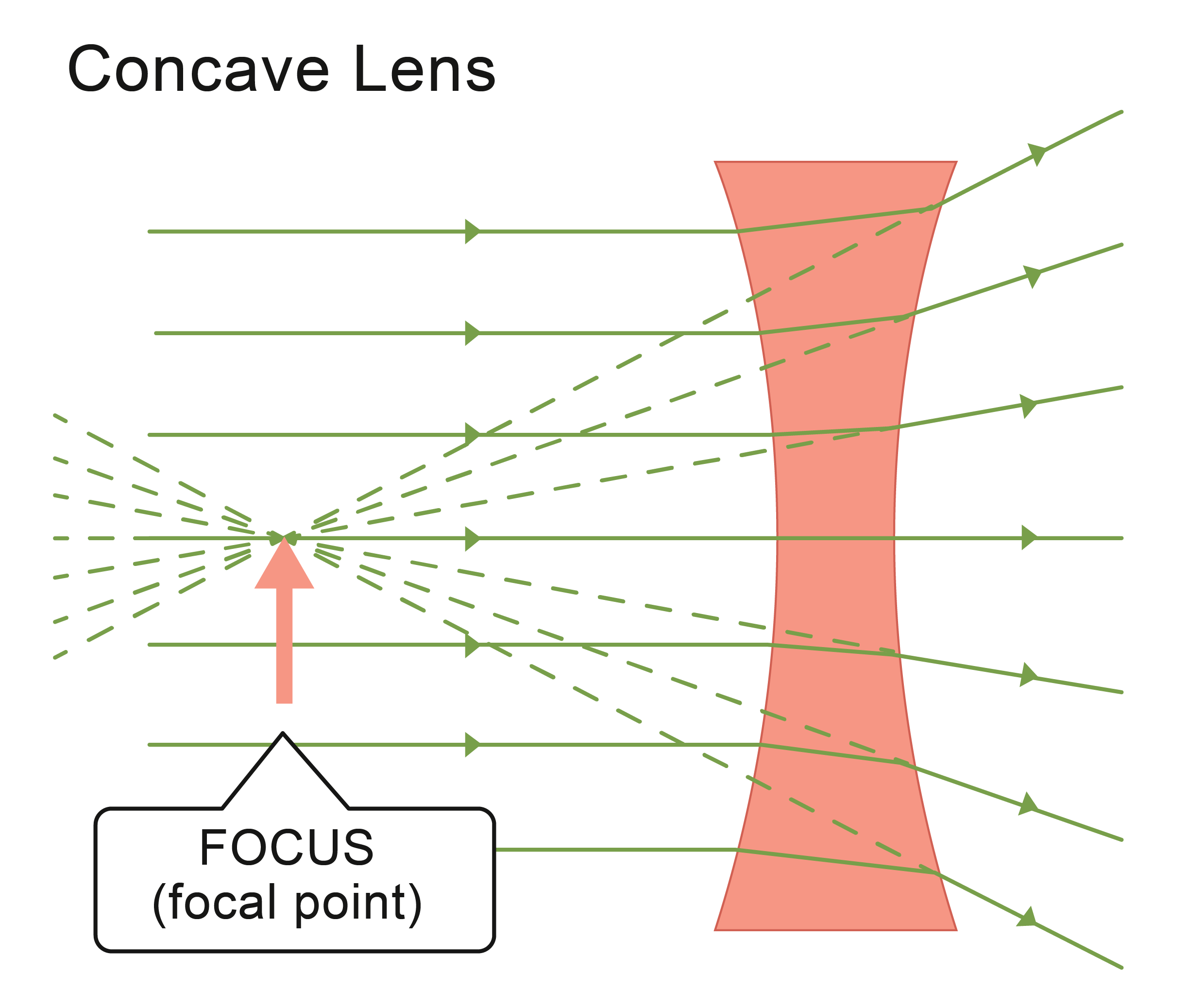
Describing an image formed by a lens
Our eyes contain lenses which allow images to form on our retinas. Just like a lens in a magnifying glass or telescope, the lenses in our eyes are convex lenses. A diagram showing how the lens in an eye works is shown below.
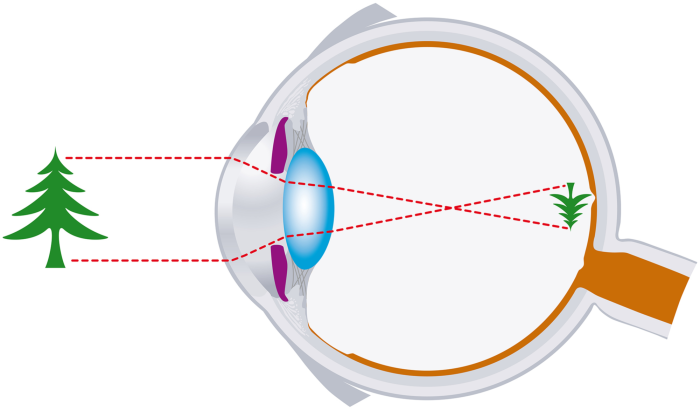
As you can see, the image that forms is upside-down! It is actually our brains that make sense of this information and turn it the right way up for us. Also, note that the image is smaller than the real object.
The following words can describe an image formed by a lens, based on how it appears:
- Upright = the right way up
- Inverted = Upside-down
- Magnified = Bigger than the real object
- Diminished = Smaller than the real object
So, in the example above, using the correct terms, the human eye makes images that are diminished and inverted.
What uses reflection?
As you know, light reflecting means bouncing off at the same angle that it struck the surface of a material. Mirrors are the most obvious example of something that uses reflection.
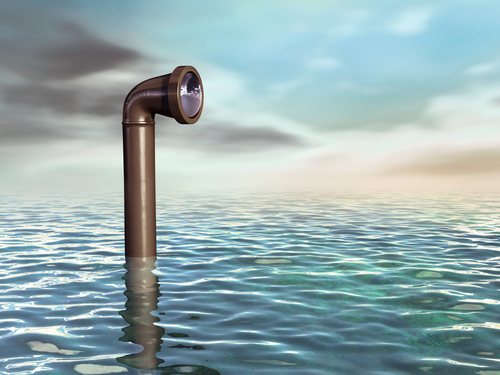
A periscope (shown above) is made using the principle of double reflection of light. They are used in submarines to look above the surface of water by using two mirrors, off which light is reflected. The diagram below shows how this works.
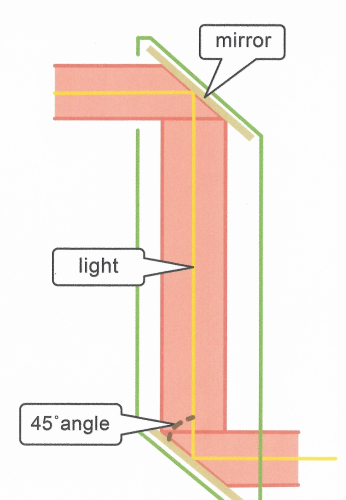
Light enters the periscope through the gap in the top. This is the part that would be above the surface of the water. By having both mirrors positioned at 45 degree angles, it allows the reflected light to travel in a perfect straight line downwards at the first mirror, and then horizontally when it strikes the second mirror. This means that the incident ray of light and reflected ray end up being parallel, so the image looks the right way up instead of being upside-down. The eyepiece is then at the bottom of the periscope, where the light leaves, and the person can see the reflected image.
Let's have a go at some questions now.

